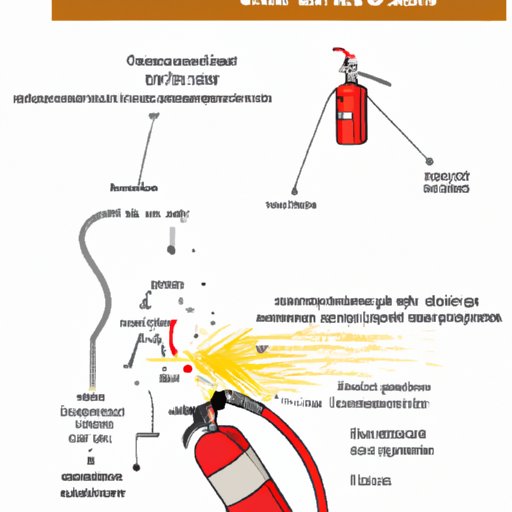
Introduction
Electrical fires can be incredibly dangerous and can cause serious damage and injury if they are not dealt with quickly and correctly. Knowing how to put out an electrical fire is an essential skill that everyone should have to keep themselves and their loved ones safe. In this article, we will take a closer look at how to put out electrical fires, including identifying the source, using a Class C fire extinguisher, cutting off the oxygen supply, avoiding water, unplugging or disconnecting the device, and seeking medical attention if needed.
Identifying the Source
One of the most important steps in putting out an electrical fire is to quickly identify the source of the fire and turn off the power supply. It is crucial to do this before attempting to put out the fire to avoid electrical shock or injury. Here are some tips to help you identify the source of the fire:
- Look for any signs of smoke or flames coming from electrical outlets, appliances, or wiring.
- Check for any circuit breakers that have been tripped or fuses that have blown.
- Listen for any strange sounds, such as crackling or popping noises coming from appliances or wiring.
Using a Class C Fire Extinguisher
If the fire is small and contained, you can use a Class C fire extinguisher to put it out. These fire extinguishers are specifically designed to put out electrical fires, as they contain a non-conductive agent that will not conduct electricity. Here are some tips on how to use a Class C fire extinguisher effectively:
- Pull the pin at the top of the fire extinguisher.
- Aim the nozzle at the base of the fire.
- Squeeze the handle to release the extinguishing agent.
- Sweep the nozzle from side to side until the fire is out.
Cutting Off the Oxygen Supply
If the fire is small and contained, you can try to cut off the oxygen supply by smothering the flames. Here are some tips on how to do this:
- Use a thick blanket to cover the flames and cut off the oxygen supply.
- If you do not have a blanket, use sand or baking soda to smother the flames.
- Avoid using water, as it is a good conductor of electricity and can cause electrocution or spread the fire.
Not Using Water
It is essential to avoid using water on electrical fires, as it can be incredibly dangerous and can cause electrocution or spread the fire. Here are some alternative methods for putting out electrical fires:
- Use a Class C fire extinguisher.
- Try cutting off the oxygen supply by smothering the flames with a thick blanket, sand, or baking soda.
Unplugging or Disconnecting the Device
If you can safely do so, it is essential to unplug or disconnect the device that caused the fire to prevent it from starting again. Here are some tips on how to do this safely:
- Avoid touching the device or cord directly, as they may still be live and pose a risk of electrocution.
- Wear rubber-soled shoes and use a wooden or plastic object, such as a broom handle, to unplug the device or switch off the power supply.
- If you are unsure how to do this safely, contact a qualified electrician for assistance.
Calling the Fire Department
In some cases, the fire may be too large or out of control for you to deal with yourself. If this is the case, you should call the fire department immediately. Here are some tips on what to do while you wait for help to arrive:
- Evacuate the building and ensure that everyone is safely outside.
- Close all doors and windows to contain the fire as much as possible.
- Do not try to re-enter the building or fight the fire yourself.
Seeking Medical Attention
If anyone has been injured in the fire, it is essential to seek medical attention immediately. Here are some tips on how to do this quickly and efficiently:
- Call 911 or your local emergency services.
- Provide clear and detailed information about the nature of the emergency.
- Follow any instructions or advice given by the emergency services operator.
- Administer first aid if you are trained to do so until the emergency services arrive.
Conclusion
Putting out electrical fires is a crucial skill that everyone should have to keep themselves and their loved ones safe. By quickly identifying the source of the fire, using a Class C fire extinguisher, cutting off the oxygen supply, avoiding water, unplugging or disconnecting the device, calling the fire department, and seeking medical attention if needed, you can help prevent serious damage and injury. Don’t forget to take steps to prevent electrical fires in the future by maintaining electrical appliances, avoiding overloading electrical outlets, and using electrical equipment properly.




